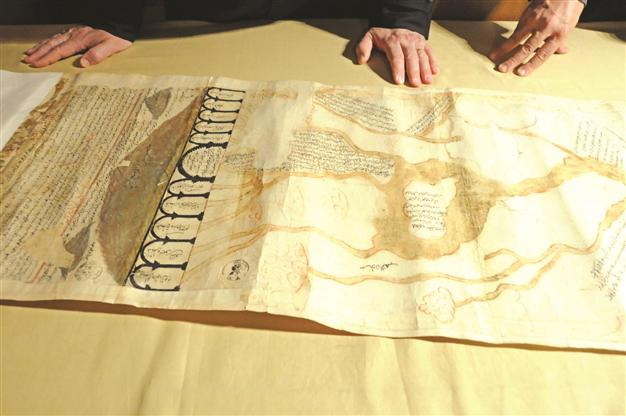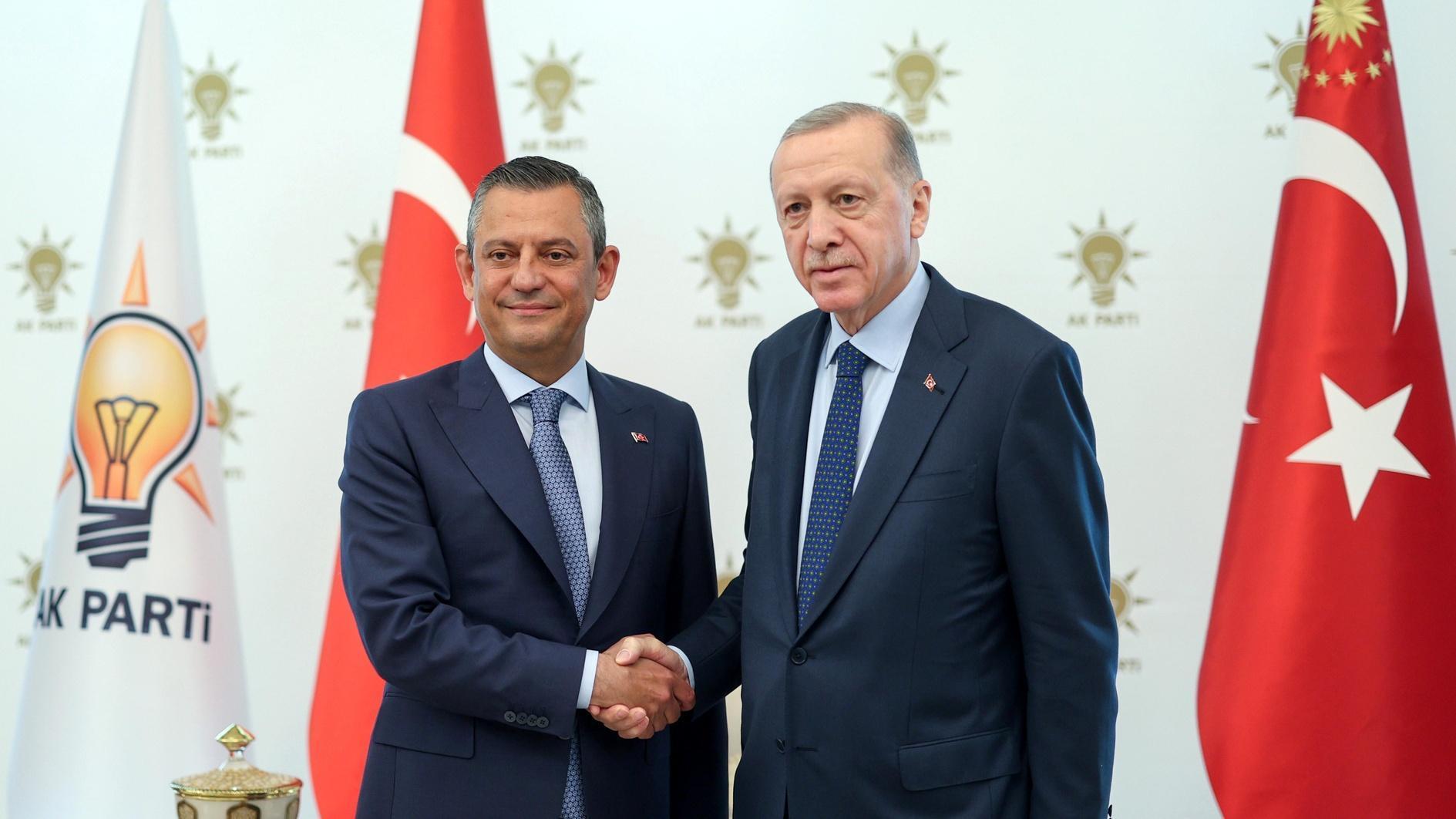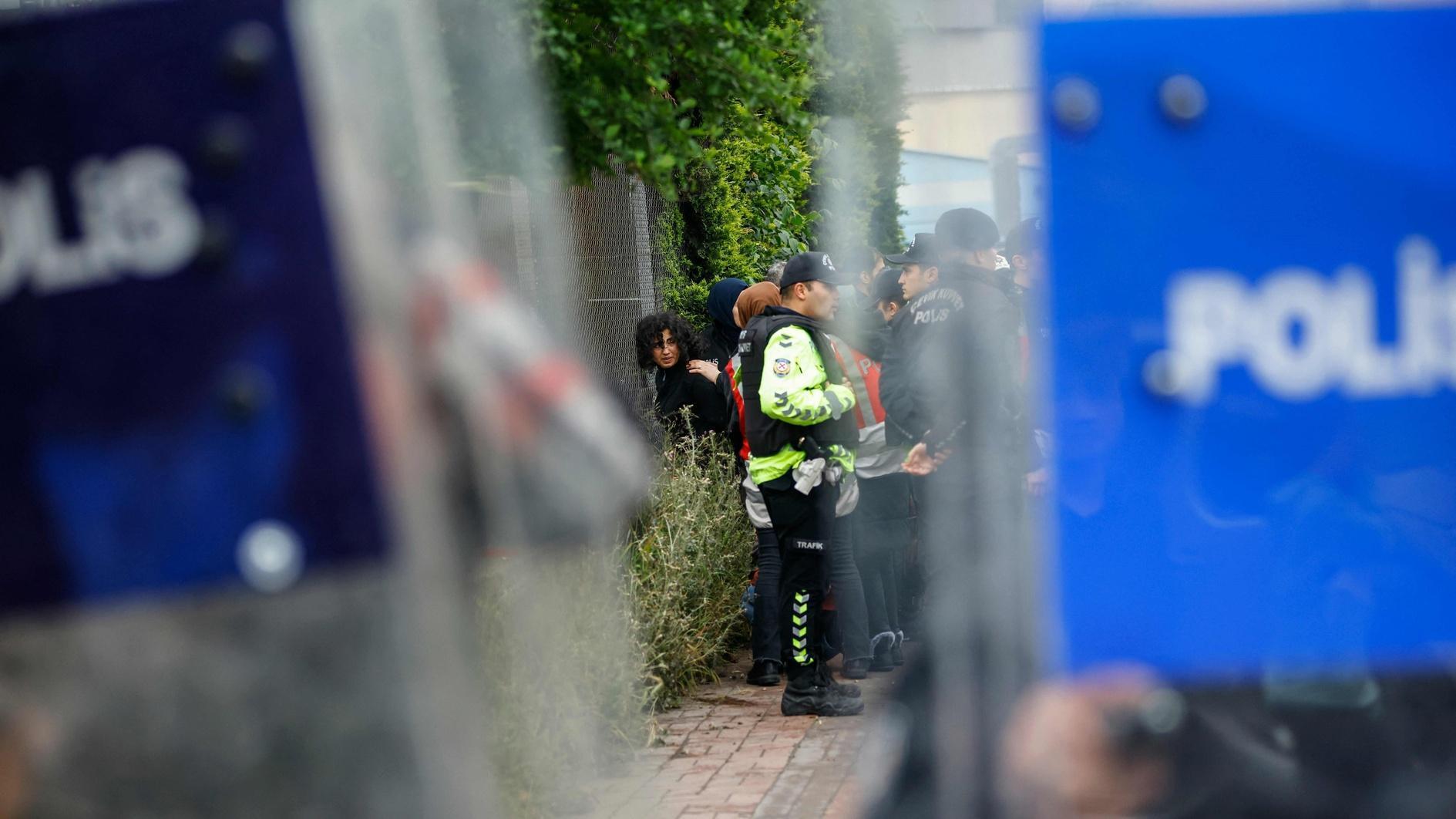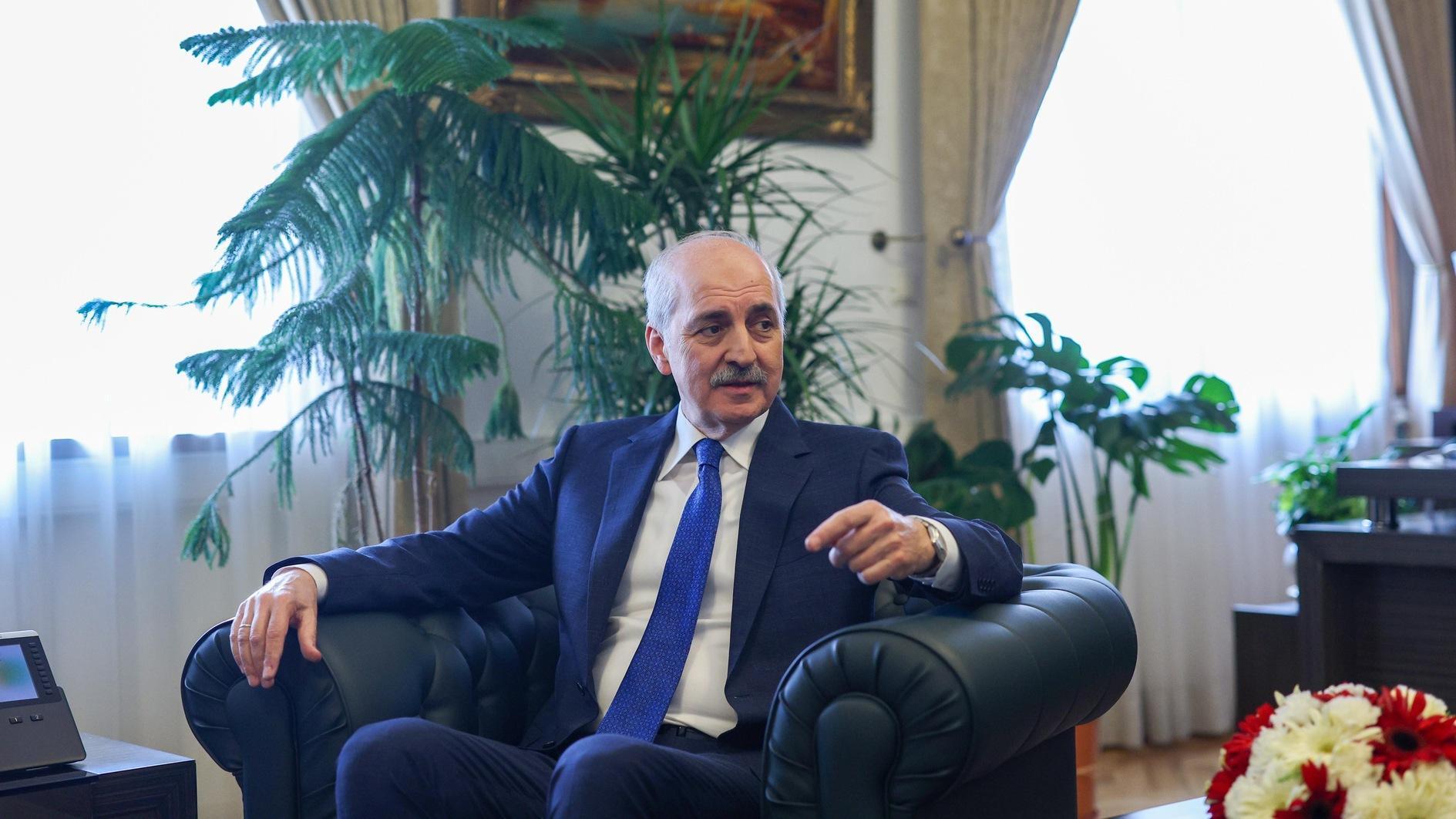Vatican displays Çelebi’s Nile map for the first
VATICAN CITY - Anatolia News Agency

The six-meter-long map is the second most famous work of the Ottoman traveler Evliya Çelebi and depicts his journey to West Sudan between 1672 and 1673. The map was displayed for the first time.
Evliya Çelebi’s map of the Nile has been made available for viewing by the press for the first time at the Vatican Library.
The six-meter-long map is the second most famous work of Çelebi and depicts his journey to West Sudan between 1672 and 1673. The map was viewed at the Vatican Library by the writer Rinaldo Marmara and Turkey’s ambassador to the Vatican, Kenan Gürsoy.
Experts presented one meter of the map, which depicted the beginning of the Nile River located in Cebel-i Kamer.
After the visit, Gürsoy said they had seen some really interesting heritage works about Turkey and world cultural history in the library. “We should be very excited because of this development,” said Gürsoy, adding that the most exciting work was the map of the Nile, which included notes and comments.
Gürsoy said countries should protect their cultural heritage and emphasize the importance of it.
The Nile map might need to restored, the ambassador said. “I think the sponsors and people who contribute to cultural life in Turkey night help Turkey to regain this important cultural heritage.”
Gürsoy said UNSECO had declared this year the year of Evliya Çelebi. “That’s why we are hopeful this map might be restored in Turkey.”
However, this is not an easy thing to do, he said. “But I am sure lots of benefactors in Turkey might help this issue and contribute to our cultural heritage,” Gürsoy said, adding that he hoped this would help strengthen the relationship between the Vatican and Turkey.
The visit to the Vatican Library also revealed a Dede Korkut tablet from the 14th century. Gürsoy said it was one of the world’s oldest manuscripts of Dede Korkut. The other related tablet is in Germany’s Dresden.
Research about Dede Korkut was mostly conducted in Dresden, he said
















